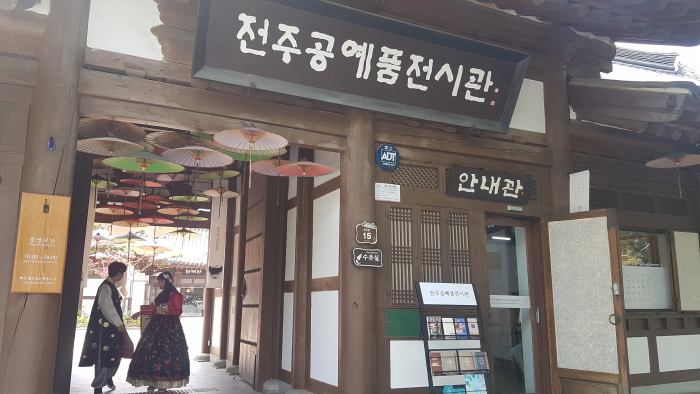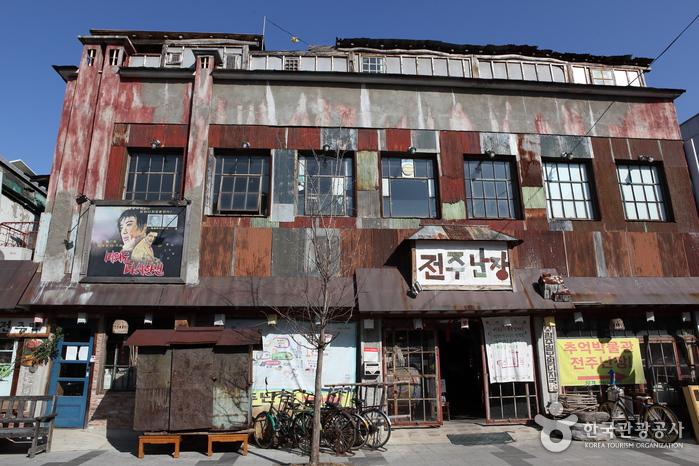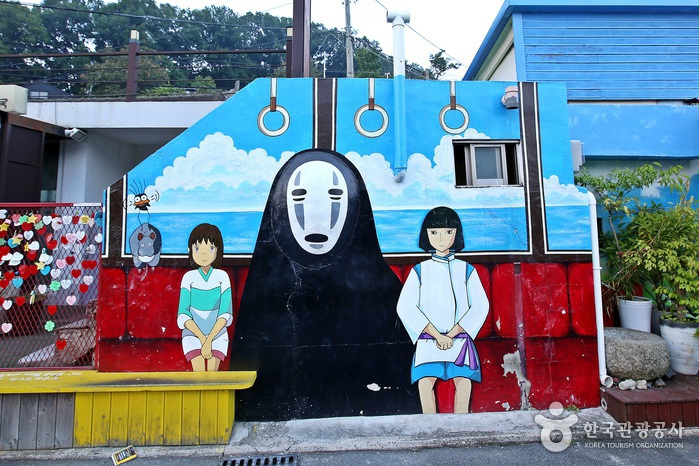Jeonju Crafts Exhibition Hall (전주공예품전시관)
315.94139214814766m 21607 2024-04-07
15, Taejo-ro, Wansan-gu, Jeonju-si, Jeonbuk-do
+82-63-282-8886
Jeonju Crafts Exhibition Hall promotes the beauty of traditional Korean crafts, and is made up of a Craft Hall, Special Exhibition Hall, and Experience Hall, Visitors can see traditional art works from master artisans as well as creative works from up-and-coming artists and designers. Visitors can also create their own handcrafted items in one of their many programs.
Hanok Stay Kkachi [Korea Quality] 한옥스테이 까치[한국관광 품질인증]
315.3056981834846m 1 2024-04-07
74-5, Eunhaeng-ro, Wansan-gu, Jeonju-si, Jeonbuk-do
+82-504-0904-2640
Kkachi (‘Magpie’) is a private hanok stay in Jeonju Hanok Village, Jeollabuk-do. This house has been painstakingly remodelled by the owner to create a stylish and relaxing space inside a hanok frame. The result is a merger of the traditional hanok style with modern convenience, such as the large number of windows which bring light into the space. In the garden, guests will find seating and a footbath, while a pool for children can be rented.
Jeonju Nanjang (전주난장)
327.43293502916714m 0 2024-04-06
33-20 Dongmun-gil, Wansan-gu, Jeonju-si, Jeonbuk-do
Jeonju Nanjang is a theme park style museum with over 25 years of materials for an attraction within Jeonju Hanok Village perfect for photo shoot and experience programs. There are more than 70 theme zones as well as a water well that is over 110 years old. Visitors can enjoy the retro feel as they roam around a museum filled with history.
Jaman Mural Village (자만벽화마을)
349.2943121554755m 1664 2024-04-07
1-10, Jamandong 1-gil, Wansan-gu, Jeonju-si, Jeonbuk-do
Jaman Mural Village is located in the ridge between Omokdae and Imokdae along the foot of Seungamsan Mountain’s Jungbawi Rock. Jeonju Hanok Village is also visible from the wide street. Although it is a fairly steep walk up to Jaman Village, visitors will be able to enjoy colorful murals painted on the buildings and walls along the way.
Jaman Mural Village (자만마을 벽화갤러리)
349.5815570478664m 0 2024-05-02
Gyo-dong, Wansan-gu, Jeonju-si, Jeonbuk-do
Jaman Mural Village is located on a hillside across the road from Jeonju Hanok Village. The village was formed by Korean war refugees resettling where they could, and remained as a small village interlaced by narrow pathways until 2012. At that point, the village was enlivened with over 40 murals and became popular for photographs. Many of the houses have been converted into cafes, guesthouses, and restaurants.
Siwon [Korea Quality] / 시원 [한국관광 품질인증]
356.8237878984567m 11550 2024-04-07
45-41 , Omokdae-gil, Wansan-gu, Jeonju-si, Jeonbuk-do
+82-10-6520-7840
Siwon is a timber and clay-built hanok stay, part of Jeonju Hanok Village in Jeollabuk-do. It has four guestrooms, all but one with a small attic - so guests can have fun climbing up and down the ladder! The rooms have all been insulated and draft-proofed to keep visitors warm and comfortable. In the yard is a small garden and swing, and guests can play traditional games such as Tuho and Jegichagi - or even take part in a carpentry workshop. Must-see sites such as Gyeonggijeon, Jeondong Cathedral, Omokdae, and Nambu Market can all be reached on foot.
Yedawon [Korea Quality] / 예다원 [한국관광 품질인증]
361.4850101504342m 184 2024-04-07
85-34 , Hyanggyo-gil, Wansan-gu, Jeonju-si, Jeonbuk-do
+82-63-228-8218, +82-10-3376-8987
Positioned at the foot of Omokdae in Jeonju, Jeollabuk-do, Yedawon is a hanok stay which offers guests a unique experience of traditional hanok life. Guestrooms have exposed timbers, walls lined with Korean paper, and framed works of calligraphy. The Lotus Room boasts a beautiful 8-panel folding screen with painted landscape, and large ink-and-wash artworks on the wall. The traditional experience program includes tea ceremonies, natural dyeing, hanji making and rice-cake making. Jeonju Hyanggyo Confucian School, Jeonju Hanbyeok Cultural Cente and Gyeonggijeon Shrine are all reachable on foot.
Sky [Korea Quality] / 하늘애 [한국관광 품질인증]
366.67877617618814m 5672 2024-04-07
33-11, Dongmun-gil, Wansan-gu, Jeonju-si, Jeonbuk-do
+82-10-6453-1200
Sky is a guesthouse located in an alley next to the Jeonju Hanok Village Parking Lot. The house was built in 1930 and remodeled in 2014. It was originally a Japanese-style house, but the original building was completely demolished and a traditional Korean house was built in its place. The sheets and blankets in all the guestrooms are embroidered by the owner of the guesthouse. Her embroidery skills make some of the guests choose to stay at this guesthouse since they can learn the trade from her. She offers an embroidery class for such guests for only KRW 4,000 per person, and only 5 people are allowed in the class. If you want, you can also play the traditional Korean game called "yutnori" for free.
Ladam [Korea Quality]라담[한국관광 품질인증]
367.77286836938396m 0 2024-04-07
83-9 , Eunhaeng-ro, Wansan-gu, Jeonju-si, Jeonbuk-do
+82-504-0904-2593
Ladam is a private hanok stay that stands on Eunhaeng-ro Street in the center of Jeonju Hanok Village, Jeollabuk-do. It is rented out as a single house, and the bedroom is equipped with a queen-size bed and top-quality bedding. Guests wishing to explore the Hanok Village will find everything is just a short walk away.
Gyeonggijeon Shrine (경기전)
376.1888587589767m 55855 2024-04-07
44 Taejo-ro, Wansan-gu, Jeonju-si, Jeonbuk-do
+82-63-281-2790
Historic Site, Gyeonggijeon Shrine was erected in 1410 and holds the portrait of King Tae-jo, the founder of the Joseon dynasty. The shrine was originally given the name Eoyongjeon, but was changed to its current name in 1442, the 24th year of King Sejong the Great. The structure was partially destroyed during the Imjin War (1592-1598), and was restored in 1614.

![Hanok Stay Kkachi [Korea Quality] 한옥스테이 까치[한국관광 품질인증]](http://tong.visitkorea.or.kr/cms/resource/39/3009439_image2_1.jpg)



![Siwon [Korea Quality] / 시원 [한국관광 품질인증]](http://tong.visitkorea.or.kr/cms/resource/24/2596624_image2_1.jpg)
![Yedawon [Korea Quality] / 예다원 [한국관광 품질인증]](http://tong.visitkorea.or.kr/cms/resource/91/2594991_image2_1.jpg)
![Sky [Korea Quality] / 하늘애 [한국관광 품질인증]](http://tong.visitkorea.or.kr/cms/resource/39/2046939_image2_1.jpg)
![Ladam [Korea Quality]라담[한국관광 품질인증]](http://tong.visitkorea.or.kr/cms/resource/64/2948864_image2_1.jpg)
 English
English
 한국어
한국어 日本語
日本語 中文(简体)
中文(简体) Deutsch
Deutsch Français
Français Español
Español Русский
Русский